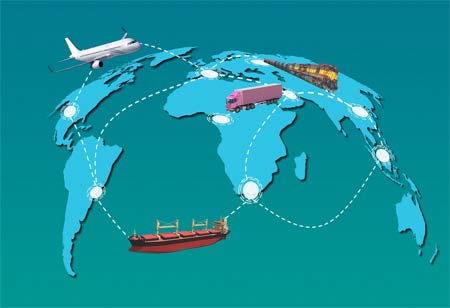THANK YOU FOR SUBSCRIBING
THANK YOU FOR SUBSCRIBING

By
Logistics Transportation Review | Monday, April 29, 2024
Stay ahead of the industry with exclusive feature stories on the top companies, expert insights and the latest news delivered straight to your inbox. Subscribe today.
Warehouse automation ensures that vital facility activities meet client demand. It commences with a warehouse management system (WMS), which automates human procedures and data capture, controls inventory, and facilitates data analysis. These technologies work with other solutions to manage and automate tasks across several business and supply chain functions.
Fremont, CA: Warehouse automation is the technique of automating the transportation of merchandise into, within, and out of warehouses to consumers while requiring minimal human intervention. As part of an automation project, a company can reduce labor-intensive tasks such as repetitive physical labor and manual data entry and processing.
There are numerous types of warehouse automation due to the diverse variety of warehouse technologies and systems available. Warehouse automation reduces manual chores and accelerates processes from receipt to delivery. There are multiple types of warehouse automation technology, including:
Good-to-Person (GTP)
Direct-to-consumer fulfillment is one of the most common strategies for enhancing efficiency and minimizing congestion. Conveyors, carousels, and vertical lift systems fall within this category. When used appropriately, GTP systems have the potential to double or triple warehouse picking speed.
Automated Storage and Retrieval Systems (AS/RS)
AS/RS is a GTP fulfillment technology that stores and retrieves materials or products using automated systems and equipment, such as material-carrying automobiles, tote shuttles, and mini-loaders. AS/RS systems are most commonly used in high-volume warehouse applications with limited space.
Automatic Guided Vehicles (AGVs)
This type of automated system has very little processing power on board. These vehicles follow a predetermined path across the warehouse using magnetic strips, cables, or sensors. With this navigation architecture, AGVs are restricted to big, simple warehouse locations. They are not appropriate for complex warehouses with a high volume of human traffic and limited space.
Autonomous Mobile Robots (AMRs)
AMRs, more adaptable than AGVs, employ GPS systems to map out efficient routes across a warehouse. They also use powerful laser navigation systems to detect impediments, allowing them to safely navigate dynamic situations with heavy human traffic. AMRs are simple to program with routes and implement rapidly.
Pick-to-Light and Put-to-Light Systems
These systems use mobile barcode scanners linked to digital LED displays to tell warehouse pickers where to position or pick up certain items. They can significantly reduce walking and searching time and human mistakes in high-volume settings.
Voice Picking and Tasking
Voice-directed warehouse methods, or pick-by-voice, use speech recognition software and mobile headphones. The technology generates optimum pick pathways to direct warehouse employees where to pick or store a product. This technology eliminates the need for handheld instruments such as RF scanners, allowing pickers to concentrate on their tasks more safely and efficiently.
Automated Sortation Systems
Sortation is detecting things on a conveyor system and redirecting them to a warehouse via RFID, barcode scanners, and sensors. Order fulfillment companies employ automated sortation systems for receiving, picking, packaging, and shipping.
I agree We use cookies on this website to enhance your user experience. By clicking any link on this page you are giving your consent for us to set cookies. More info





